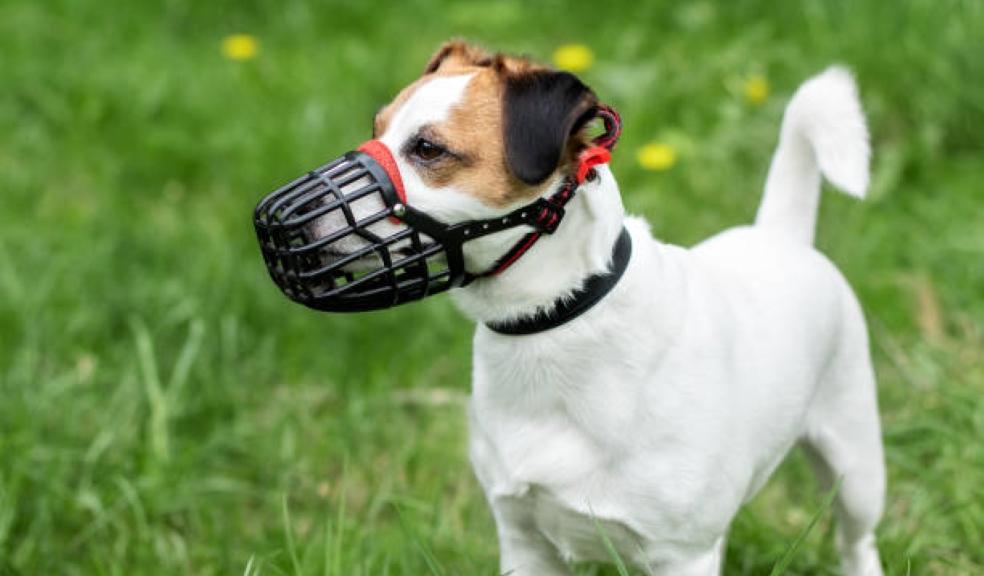
PDSA urges to see past the muzzle & breaks down misconceptions
Last released figures shared by Defra showcased that more than 35,000 dogs have been registered in England and Wales under the XL Bully exemption scheme. Not factoring in the number of dogs living in Scotland who as of 23 February will be required to wear a muzzle, there's bound to be a surge in dogs outside wearing muzzles.
PDSA Vet Nurse Nina Downing, explains there's many misconceptions around muzzles, which all XL Bully type dogs must now wear when out and about, in order to comply with the Exemption rules. This includes when being transported in a car.
"As a Vet Nurse, and working in the profession, muzzles are no stranger to us. In fact, muzzles can be extremely helpful in our line of work. It's a big myth that muzzles are bad for dogs.
"We're very keen to highlight misconceptions about muzzles. For many, especially now, muzzles are going to be part of their daily routine – grab your dog's lead, collar and muzzle before heading out for walk.
"Dogs don't care what they look like – that's a human thing. Thinking a dog in a muzzle must be 'dangerous' just isn't accurate when muzzles have other uses. Vet professionals see them on a day-to-day basis and frankly, see past the muzzle."
The leading vet charity shared some of the muzzle misconceptions it has heard since the ban was announced:
-
Muzzles are prison for pooches
-
They are animal cruelty
-
Look barbaric
-
Muzzles look like a monstrosity
-
Horrible contraptions
Why use a muzzle?
"We do understand how muzzles can create the fear of the unknown, especially if you've only seen them portrayed on fierce looking guard dogs in films! It's important to be aware though – muzzles can be used for other positive reasons, and many of the dogs you may see out and about wearing them these days are not to be feared.
"Muzzles can be especially helpful for dogs who like to eat non-food items – owners who have a dog who munches on poo whilst out on walks will understand this better than most!
"They can also create some safety for dogs themselves, if a dog does like to sniff out things to pick up when on walks, a muzzle can help to stop them easily picking up potentially harmful foods or substances.
"Even the friendliest of dogs can find some situations stressful – such as visits to the groomers or the vets, particularly if they're in pain or have had a previous uncomfortable experience. That's why we'd recommend all owners include muzzle training with their general dog training. It's just as handy for your dog to be happy wearing a muzzle as it is for them to know how to 'sit' and 'wait', should you need them to.
"It's also imperative people understand that a muzzle is not 'animal cruelty'. If a dog is wearing a suitable, comfortably fitting, spacious muzzle, they should be able to fully pant, drink water, and even take treats with ease.
Choosing the right muzzle for your dog
"When choosing the best muzzle for your individual dog, you want to make sure that:
- There's roughly 1cm space between your dog's nose and the very end of the muzzle.
- There's plenty of airflow so your dog doesn't overheat and can breathe normally.
- Enough room for your dog to comfortably open their mouth to eat and drink.
- Plenty of space for your dog to fully pant.
- Should be made of a durable but comfortable material so it doesn't break but also doesn't irritate your dog's skin.
"It's always key for pet owners to slowly introduce a muzzle in a positive way, to help their dog become confident and happy wearing it. Muzzle training shouldn't be rushed and should always be done at a dog's pace, in several short sessions over a few weeks, so they have time to adjust and feel comfortable wearing a muzzle.
"Whilst muzzles have their uses for shorter periods of time, they are not meant to be worn as a constant. However, a good walk, whether short or long, that suits the energy levels of your dog is fine to wear a muzzle for."
How to muzzle train your dog
- Step 1: Introduce the muzzle – Place the muzzle on the floor with treats around it. Try to give your dog their meals next to the muzzle for a few days to build up positive association with it.
- Step 2: Nose in the muzzle - When your pet is comfortable with the sight of the muzzle, encourage them to put their nose into it. You can do this by giving them treats through the gaps. Then, start to move the treats further into the muzzle until your dog is happy to take one from the end.
- Step 3: Hold the straps - Once your dog is comfortable with their face in the muzzle, start holding the straps behind your dog's ears. Make sure you give them a treat and don't fasten it until your dog is happy.
- Step 4: Leave the muzzle on - Only when your dog is happy with wearing the muzzle, start fastening it and give them a treat. Take off the muzzle when they've finished their treat. Make sure to repeat this and increase the time your dog wears the muzzle. It's important to make sure you remove it if they are stressed at any point.
- Step 5: Keep practicing - Remain patient with your pet and keep trying until they are comfortable. The main goal is to make this a positive experience for your dog with regular treats and rewards.
There's plenty of muzzle training guidance and advice on PDSA's website.







